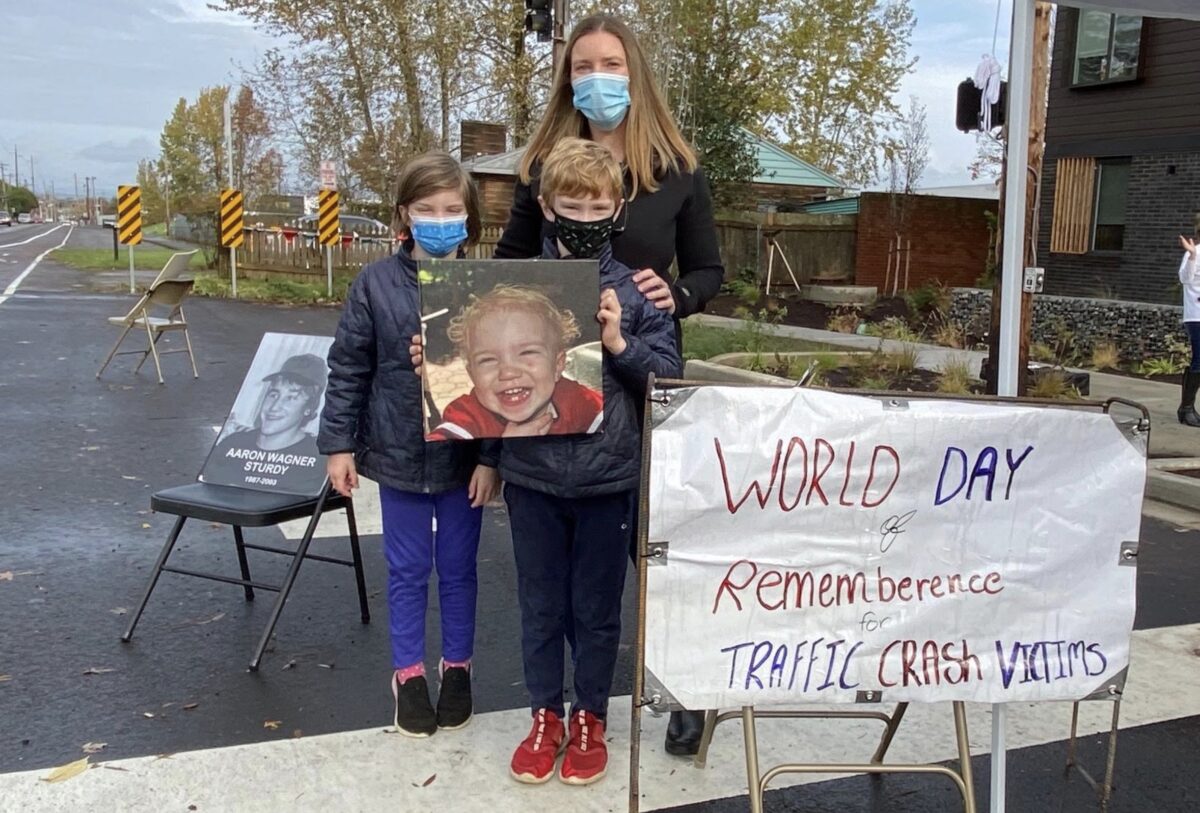
(Photo: Oregon Walks)
Courageous family members of traffic crash victims stood at a deadly Gresham intersection Sunday to implore people to stop driving recklessly and raise awareness of road safety.
Portland-based nonprofit Oregon Walks hosted the event with members of the Oregon/SW Washington chapter of Families for Safe Streets as part of the World Day of Remembrance for Traffic Crash Victims. The event location — SE Hogan Road and SE 5th St — is where Luis Medina, an 11-year-old student was struck and killed by a driver as he was walking to school on January 6, 2020. Two weeks earlier, 17-year-old Jayden Auberry was struck and killed while bicycling just one block away.
The event was covered by KATU and KOIN.
Advertisement
Oregon Walks Board Member and Portland-based lawyer and traffic law expert Scott Kocher was also at the event. He released initial findings from an analysis of fatal pedestrian crashes in Portland. Kocher and a crew of volunteers and road safety experts have gathered and reviewed data from 48 fatal pedestrian crashes between 2017 and 2019. With analysis of police reports, road user behavior, and street designs, Kocher says it will be, “The most comprehensive look at pedestrian crashes by safety advocates in Portland’s history.”
One of the key takeaways is that, “Pedestrian deaths in Portland are an equity issue disproportionately affecting underserved areas and populations including people of color, older adults, persons with disabilities and people experiencing homelessness”.
Here’s more from a preview of the findings (emphases mine):
• All of the 48 fatal pedestrian crashes in Portland during this three-year period (2017-2019) occurred in areas where the median income was below the citywide median income of $68,676.
• The fatal pedestrian crash death rate in the underserved area of East Portland (east of 82nd Ave.) is over twice that of the rest of the city.
• Police reports include data about crash victims, including race. Based on that data for Portland, people identified as black are nearly three times more likely to be killed in pedestrian crashes compared to other groups.
• The death rate from pedestrian crashes for older adults (65+) is over 3 times that of the rest of the population.
Advertisement
• A disproportionately high 31% of pedestrians killed in crashes from 2017 to 2019 were “disabled” according to the ADA definition. 12% of the Portland population meets this definition.
• 21% of those killed as pedestrians were experiencing homelessness. According to different estimates, between 0.5% and 2% of the Portland population is experiencing homelessness.
Inadequate Street Lighting is a Major Issue in Portland
• 79% of the 48 fatal pedestrian crashes reviewed occurred when it was dark.
• Reviewers identified possible inadequacies with the street lighting at 58% of the locations where fatal crashes occurred during darkness. Additional review is in progress.
• Street lights were completely absent on one whole side of the street at 12 out of 22 locations where the worst lighting concerns were identified. These were wide streets (>48’) where lighting on one side is inadequate.
• Inadequate street lighting is an equity issue: The 2019 “PedPDX: Walking While Black” pedestrian survey by the Portland Bureau of Transportation revealed “Poor Lighting” to be the #1 concern among Black Portlanders. All crashes (2017-2019) that killed pedestrians who were identified as Black occurred when it was dark. Reviewers identified inadequate street lighting in all but one of these crashes.
• 77% of fatal pedestrian crash locations where reviewers identified potentially inadequate street lighting were located in East Portland.
Contributing Crash Factors
• Lack of Traffic Calming – Reviewers identified inadequate traffic calming at nearly half of all fatal pedestrian crash locations. Problem streets typically have long straightaways with nothing to prevent drivers from reaching unsafe speeds.
• Statutory Speed – Oregon law sets default or “statutory” speeds based on roadway type and surrounding land use. 27 of the 48 fatal pedestrian crashes reviewed occurred on streets that currently have speeds set faster than the statutory speed. Orders of the statewide Speed Zone Review Panel, some of which are decades old, must be rescinded to restore these Portland streets to the lower speeds specified by Oregon statute.
• SUVs and Trucks – 54% of fatal crashes involved SUVs and trucks. Nationally, researchers believe part of the increase in pedestrian fatalities is due to more people driving vehicles that are tall in front.
• Arterials – The highest number of crashes occurred on Arterials (federal roadway classification) with a speed limit of 30 or 35 mph.
• Distraction – While distraction is an ongoing concern, reviews by Oregon Walks show that in crashes where a determination could be made, distracted drivers and pedestrians were not as common as the reviewers expected.
The full report will be available in early 2021.
According to the BikePortland Fatality Tracker, people walking or sleeping account for 17 (15 and 2 respectively) of the 46 traffic deaths in Portland so far this year.
— Jonathan Maus: (503) 706-8804, @jonathan_maus on Twitter and jonathan@bikeportland.org
— Get our headlines delivered to your inbox.
— Support this independent community media outlet with a one-time contribution or monthly subscription.


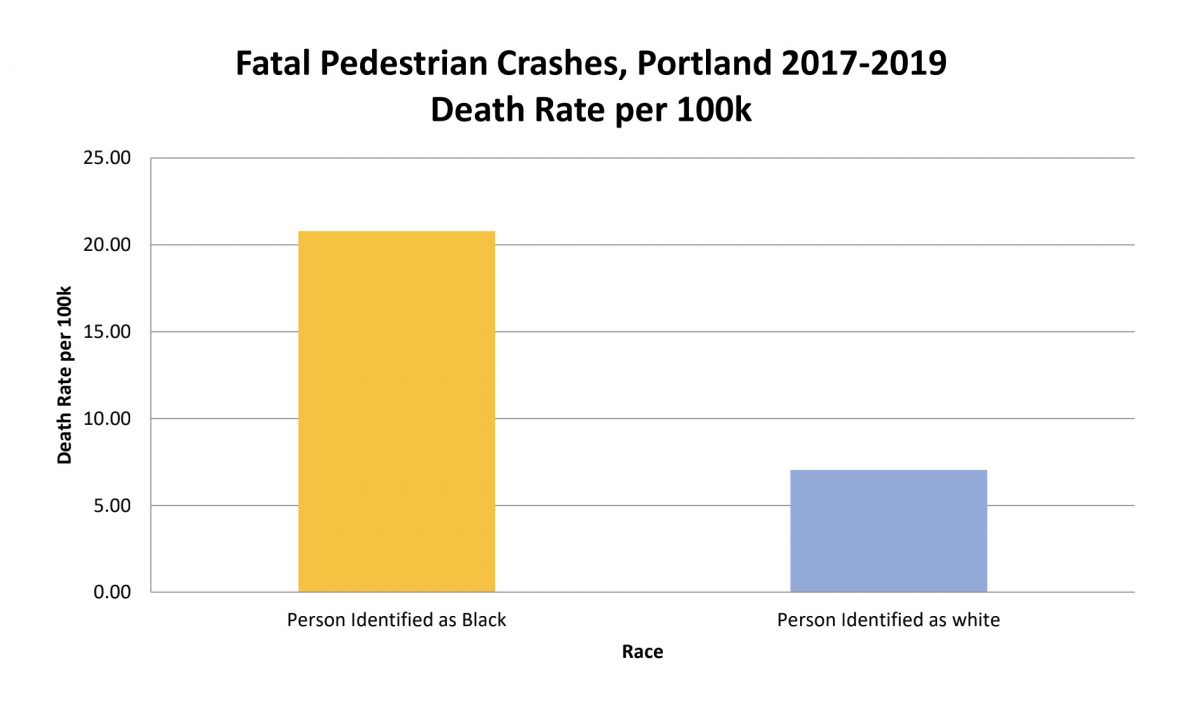
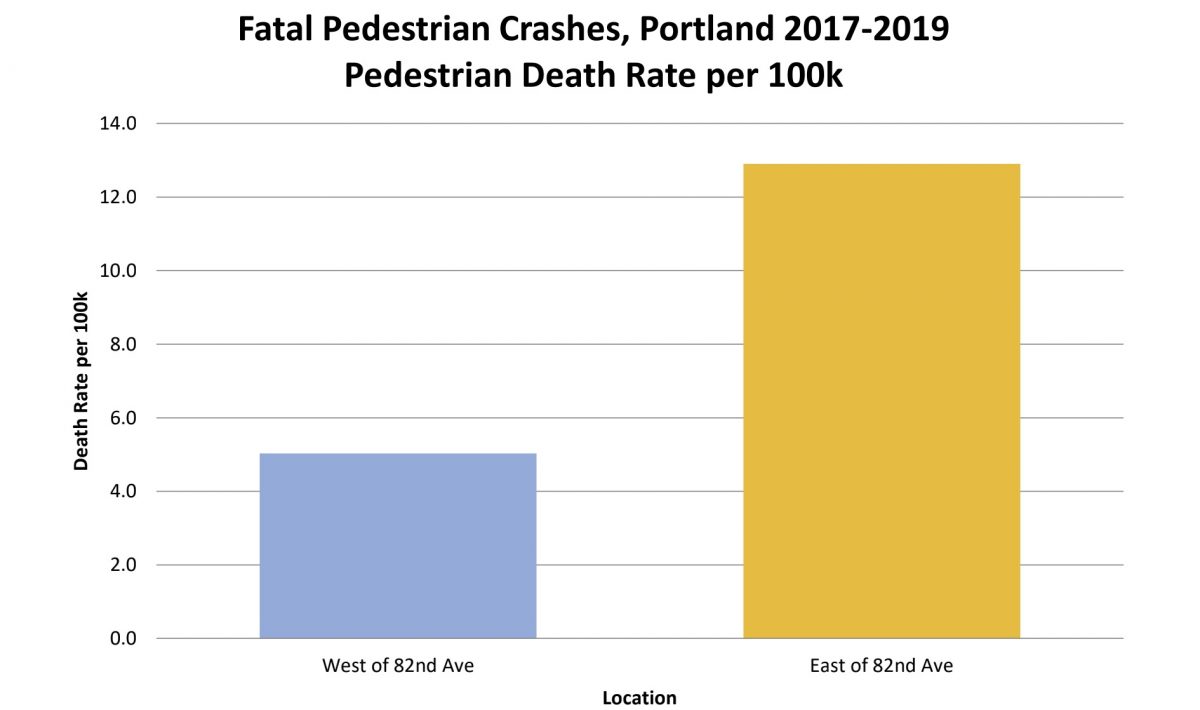
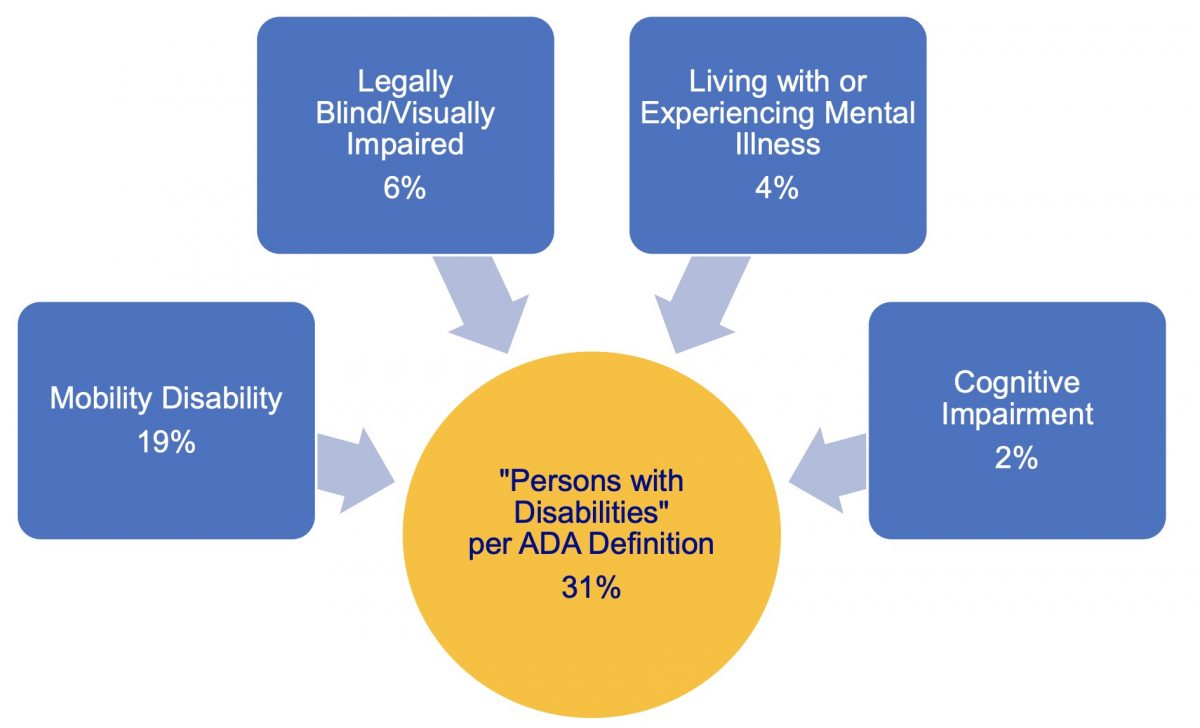
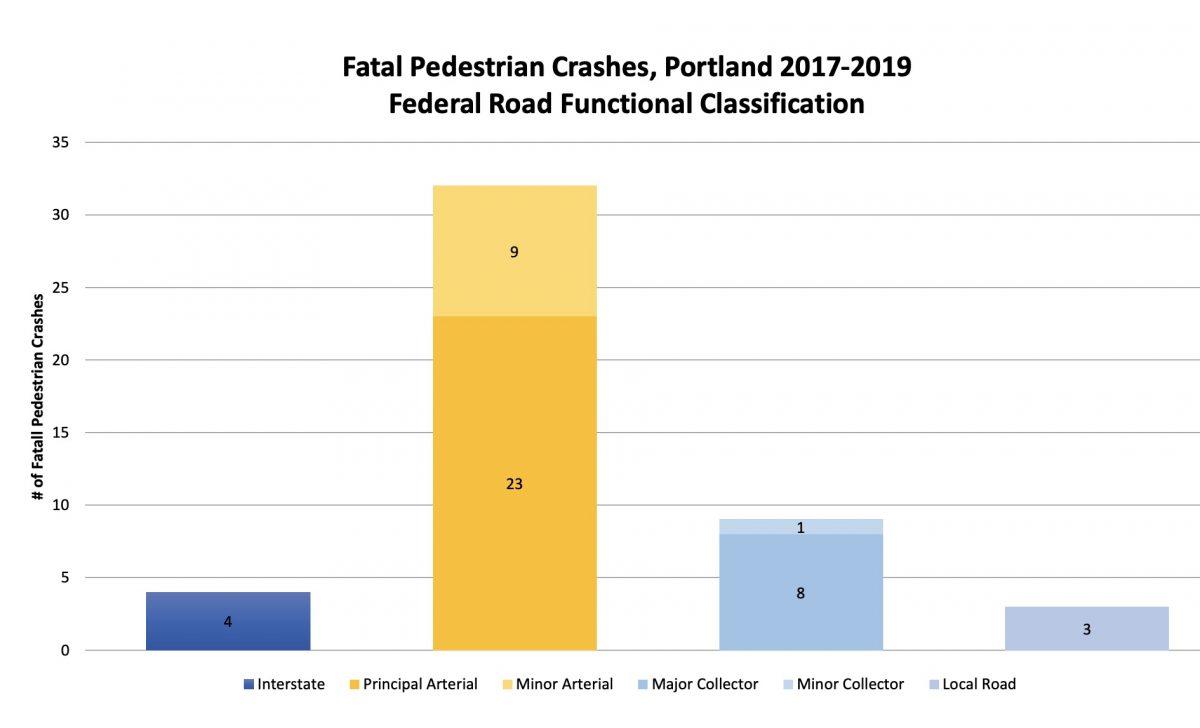
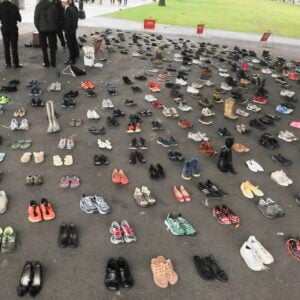
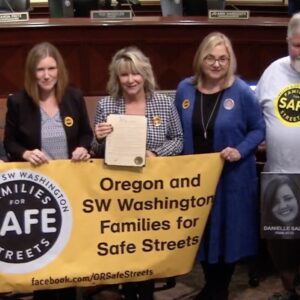
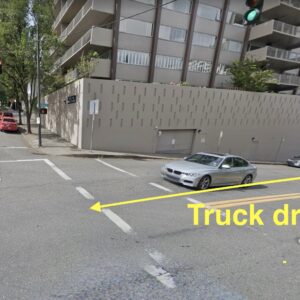
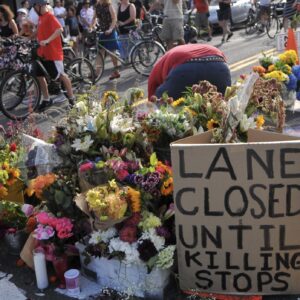
Thanks for reading.
BikePortland has served this community with independent community journalism since 2005. We rely on subscriptions from readers like you to survive. Your financial support is vital in keeping this valuable resource alive and well.
Please subscribe today to strengthen and expand our work.
So I want to make clear this is not a budget problem or a lack of research. With very few funds, PBoT could redesign arterials tomorrow, with PBLs, frequent medians for crosswalks, and 25mph limit. This simple redesign would have an immediate effect on the majority (32/48 crashes). We know how to solve this problem, but we choose to prioritize car capacity, speed and parking.
Clearly you have never lived long in East Portland. Onstreet parking isn’t an issue in East Portland, at least on arterial streets. The county banned parking on arterial streets, forcing developers to put in driveways and lots of offstreet parking, way too much really, a policy that was reversed when the city annexed it between 1986 and 1991, but by then most people had gotten into the habit of not parking on a major street. Bike on 122nd or outer Division and you’ll see long gaps where parking is allowed but no one is using it.
PBOT to its credit has already redesigned most of the arterial stroads of East Portland for PBLs, pedestrian islands, etc, even with more signals that might just slow down a few drivers. The difficulty is there has never been enough money nor political spine to implement any meaningful changes, and what little money there is gets siphoned off for inner Portland projects in areas that have almost no pedestrian deaths whatsoever, but lots of squeaky wheels (from City Hall, PBOT bureaucrats who live nearby, members of the nonprofit industrial complex, and bike activists, among others). And when East Portland does get funding, projects are mysteriously delayed until a certain number of cute white children are killed in freak “accidents” just waiting to happen. Only ODOT seems to respond positively to East Portland activists.
And of course there’s no speed enforcement in East Portland – your 25mph signs aren’t any good if even the police are cruising at 90 (as apparently they do late at night on Glisan at around 132nd).
I am from E Portland. PBoT has not redesigned most arterial roads in E Portland (eg 122nd, Stark/Washington). Yes, signs are worthless if there are no speed cameras.
If only there were some sort of mobile, available, and readily-deployed means of detecting and issuing tickets to people violating the speed limit. Maybe we could use some of the police budget to create a group dedicated to solving this exact problem.
You are right that signs are just suggestions without enforcement. If that’s off the table, please be extra-careful when you’re out and about.
So interesting you mentioned this. DC has created an app to allow citizens to report parking violations. I know also there is a small industry of people identifying idlers in NYC, the impetus for which is some sort of percentage on the fine. I would like to avoid the air of vigilantism, particularly with the current white supremacist situation, but such systems have merit.
Identifying and collecting evidence about moving violations would be much harder than taking a pic of a parking violation.
And, on a more political level, who wants to be accused of racism by inadvertently reporting a non-white driver? Remember the infamous “crosswalk incident”?
I think crowd sourcing law enforcement is an awful, awful idea.
Agreed, but parking violations has some possibility. In NY one of the biggest impediments to road safety is actually the NYPD. Crazy, but true. Here is a bill proposed by the city council allowing citizens to report on placard abuse and parking violations. Pretty awesome.
There is also a whole industry around tracking your movements using the GPS on your phone and other commercial personal tracking devices – how fast you are going, where to, where you are spending money. It’s all very invasive, but its greatest allies are the naive users themselves who keep allowing (and even encouraging) companies to track their movements through various apps, often even boasting about it. Technically governments aren’t supposed to use this info (though Homeland Security has been cited several times, as have numerous foreign governments), but that hasn’t stopped companies sharing the data with each other and with local police during “emergencies.”
And of course there are the ubiquitous scooter companies like Byrd and Lime who track your movements as you pay to use their services and machines, linking the credit card number you used with your purchase history. The data they produce already is influencing transportation planners nationwide.
Not a budget problem? You clearly have no clue about agency budgets. I worked for two years as a manager in a transportation division (not PBOT). Besides that, I have read (and testified about) budget of ODOT and various cities. Most of the funds go to maintenance – sweeping, pavement markings, pothole repair, sign replacement, the electricity to run signals…. A sixty-year old culvert that collapsed caused a whole section of road to disappear and wiped out our emergency fund for an entire year.
Besides that, there’s an expectation (and case law) that requires any project bring the entire road section up to current standards, notably the Americans with Disabilities Act.
I don’t disagree that we should do more and implement redesigned streets, but it’s going to take a massive amount of money and a willingness to pay for it. I support a gas tax increase of a few dollars a gallon to bring the US taxes into line with civilized countries like those in Europe.
I don’t doubt the cost of maintenance and ADA compliance (and appreciate both). But I certainly doubt how much an effect this has on limiting safe road design. In your estimate, how much would it take to place parking-protected PBLs with plastic bollard delineators for protected intersections along 30 miles of commercial streets in Portland? Building a network of protected bike lanes (something that is very feasible) is much less a matter of cost than political will and the prioritization of car capacity, speed and parking over safety. If this were not the case, East Broadway/Weidler, Hawthorne, Sandy and many more streets would have been redesigned decades ago. Safety is clearly not a priority.
Converting a signalized intersection to a protected, signalized intersection would probably cost $1M to $2M. That includes complete change in signalization, new curbs, new ramps, maybe new drainage structures.
PBOT place hundreds of plastic wands on SE 45th Avenue last year and more than half are missing. I have no idea how much the installation cost, but the maintenance issue has clearly not been addressed.
I am sure fully signalized and concrete intersections would cost that much, perhaps more. I’m suggesting interim fixes that would transform an entire street. I understand bollards aren’t great and have seen a lot of destroyed ones. Here is a simple paint and bollard protected intersection, now finally standard in PBL design in NY. The city could easily decide to build Broadway/Weidler, Sandy, Williams/Vancouver, Hawthorne for fairly cheap. It is not a budget problem.
Two more thumbs up ! How much “over” is “cool” ?
“Pedestrian deaths in Portland are an equity issue disproportionately affecting underserved areas and populations including people of color, older adults, persons with disabilities and people experiencing homelessness”.
It looks like we need to start running over more white people who are younger and affluent in order to get the equality of outcomes that Progressivism demands.
In Portland our favorite drum to beat is “enforcement is discriminatory”. No cops, no cameras, nothing. I don’t expect pedestrian death rates to decline any time soon.
Right. For starters and given PBOT’s current budget crises, I’d suggest PBOT remove 75% of the intersection signals in inner and downtown Portland and relocate them to East Portland, replacing them with yield signs or no signage, like in East Portland. As the report said, the number 1 contributing crash factor was
“• Lack of Traffic Calming – Reviewers identified inadequate traffic calming at nearly half of all fatal pedestrian crash locations. Problem streets typically have long straightaways with nothing to prevent drivers from reaching unsafe speeds.”
Also remove 25% of street lighting and move them to East Portland. It all about equity and inner Portland is just too darn safe for its own good – it needs to be dropped several notches down to the level of East Portland.
Also, there’s too many and too continuous sidewalks in residential areas in inner Portland. 75% of the sidewalks need to go, but only at houses built before 1991, leaving “sidewalk islands” at any house built afterwards. Irvington and Lauralhurst can keep most of theirs, but the surrounding neighborhood bungalow sidewalks must go.
I admire your commitment to Equity!
We probably need to move some speed bumps as well. Maybe they’ll fit on the trucks carrying the sidewalks east.
But those discriminate against the low-riders.
Maybe we move the speed bumps from former low-rider neighborhoods in inner Portland first and deposit them into current non-lowrider East Portland neighborhoods?
I support this wholeheartedly but would like to see it extended to other built infrastructure. For example, grocery store lots in inner Portland should be rezoned so that stores are forced to relocate to newly created “grocery-reparations” zones in East Portland. Once “inners” experience the joy of driving their suvs/trucks/cars 7-10 miles to the nearest grocery store they will likely gain a better understanding into why systemic racism and classism require a little more sacrifice on their part than planting a “Love is Love” sign on their lawns.
You read these sobering statistics and stories and decided to make a joke about equity meaning we should kill more people? This right here is why many folks steer away from engaging with this blog and folks like you are the dominant voice. Depressing AF.
Thank you for saying this. Jonathan, these are some really disturbing comments.
Thanks for letting me know. I will review the comments and delete/edit as necessary.
Anyone who does any community activism in East Portland or any other highly neglected community in this country regularly get these reports, offered by academics and do-goody white middle-class nonprofits who offer no solutions. It’s hard to not be highly cynical of such reports. There are certain technological solutions that are overwhelmingly effective, but they are rarely implemented no matter how bad conditions are, usually due to a lack of political representation and will rather than a lack of money. Until City Hall and PBOT are moved to 122nd and Division, there will be no meaningful progress in saving people’s lives and preventing serious injuries in East Portland.
Given that this process of “mea culpa” reports come out every couple of years and nothing as usual happens, how can anyone do anything other than despair? So we joke about it. It’s a reasonable response to a continuously absurd situation.
Gallows humor…
But forget the joking — concern about “equity” is killing people, for real.
The bottom line is we have a choice between the “inequity” of enforcing traffic laws and the “inequity” of people being killed by dangerous driving. There are long term solutions that let us avoid that choice (expensive or politically difficult as they are), but I don’t see any in the short term.
Given that we need to pick one, protecting people from “traffic violence” seems like such an obvious priority that I still have a hard time believing that any serious thinker could conclude that actual traffic policing (as opposed to making pretext stops) could somehow be worse. And yet that’s the opinion of a surprising number of people here, especially considering we are all part of a group that has routinely high exposure to injury or death from bad driving because we choose to cycle.
If anyone wants to continue this conversation, I’d suggest we look at numbers of people killed or seriously injured in various scenarios, and whether there is evidence of bias by Portland Police in traffic enforcement.
I would love to see just how much “bias” contributes to these statistics.
Ok, I’ll engage on this and try to represent my views as a ‘serious thinker’ who believes that overpolicing and ignoring racial disparities in traffic crashes are hindrances to traffic safety efforts and not short term solutions.
1) There is certainly evidence of bias by Portland Police in traffic stops. Black and African American residents make up about 5.7% of the population in Multnomah County (which is likely even less in Portland proper). According to PPB’s own data from 2018 (the most recent available) 10.5% of drivers stopped by the traffic unit were Black, while 23.4% (!) of drivers stopped by non-traffic units were Black. Non traffic units make up over half of all driver stops in the City. On top of that, Black drivers were almost three times as likely to be searched than any other driver stopped. It’s pretty hard to find data that tells a different story. Sure, I understand you are preferring to separate these units out and advance some sort of ‘pure’ traffic enforcement that eliminates pretext stops, even though that is not the reality the ground – and even so, traffic stops by the traffic unit is still disproportionately impacting Black residents.
2) You mention that long term solutions (I’m assuming that means street design changes) are expensive and politically difficult. It’s incredible to me that the concept of increasing enforcement is not evaluated on this same cost/feasibility analysis while also having a much less direct impact on reducing traffic deaths. Look at most ‘Vision Zero’ cities/countries outside of the US that we love to point to, and policing is not a critical part of the equation. Traffic cameras are, but that’s not what you are proposing.
Portland has 10 high crash corridors with many high crash intersections along them. I have not seen a proposal of how much it would truly cost to meaningfully reduce crashes at every high crash intersection using enforcement. In previous articles on this website, like the one about the fatality at 122nd and Burnside, readers here seemed to believe that active enforcement at specific intersections is what is needed to make them safe. Does this require an officer at each intersection? On each high crash corridor? Would they be present all night, since that is when a lot of crashes happen (likely requiring overtime)? What about when they conduct a stop – that high crash corridor is then left completely to the wolves, so we better have at least 2 patrols happening on every corridor 24 hours a day. Does this continue in perpetuity – because if you remove the enforcement, you’d assume the crashes would start right back up again.
I am just unclear what the ‘easy short term solution of enforcement’ is that is so obvious, not expensive, and would in no way impact the dramatic disparities in who gets pulled over, searched, and killed by police. Oh, and to add to that, there are a huge number of vacancies in the police bureau – people simply do not want to become police officers. So there isn’t a cadre of officers just waiting in the wings to do pure traffic enforcement – so when you talk ‘politically difficult’, I’m going to guess a massive effort to increase traffic officers to a level that would actually reduce traffic deaths would be equally if not more difficult than moving street safety projects along (that have a proven impact on decreasing serious crashes). That is all about the lift needed OUTSIDE the issue of bias, racism, and disproportionate impact of violence, fines, court fees, and jail time. This is why I believe continually chasing more policing is a hindrance to traffic safety efforts.
I responded to this thread initially because I read every BikePortland article as a citizen interested in transportation. I then read the comments, and threads like this are on almost every one – usually including the same few commenters. It especially irked me this time because of this insinuation that ‘equity’ is killing people (or joking that it means we should kill more white people) on an article about people directly impacted, who lost children to traffic violence. This is wildly disrespectful in my view. I’m tired of these threads going unchallenged. But, I’m also not going to invest a lot more energy into this because I find online debates very exhausting as I’m sure this will be an endless back and forth.
Thank you for engaging in this issue on an intellectual level.
This might be compelling evidence of bias if the crash statistics didn’t show that Black/African Americans represented 13.0% of crash injuries. Crash injuries seem a reasonable proxy for dangerous driving, so, if anything, that group seems to be somewhat underrepresented in the traffic stop data.
I regard this as a separate problem. Many stops by the “regular police” are pretext stops, where a traffic infraction is simply an excuse to pull someone over whom the police deem “suspicious”, which seems much more likely to result in biased decisions. I generally do not support making pretext stops, and do not consider those stops to be part of “actual traffic policing”, because they’re not; they’re really about fighting other kinds of crime. In my comments above, I was arguing for traffic division patrols, not the increased use of regular police for traffic enforcement. I may not have made that clear enough, but I’ve made similar comments in the past and assumed most readers would be familiar with those.
Reconstructing our street network => expensive; ramping up speed camera use => difficult (apparently… they’ve been legal in Portland since 2015, they’re reasonably effective, we have a commissioner who claims to support them, and yet… we just don’t have many).
I am only aware of one way to address increasing traffic mayhem in the short term — increased enforcement. Absent that, we’ll continue to see high numbers of traffic fatalities. Hence the choice: Increase enforcement until other solutions are available, or accept continued high (and growing) levels of death and injury to our residents.
You raise the question of whether traffic enforcement is itself feasible given a shortage of officers. I don’t have an answer to that (though you don’t need nearly as many officers as you suggest; a credible threat of being stopped is enough to alter behavior, and that might be as little as 1 or 2 FTE at random locations/times). If that is not possible, then this conversation is moot, because we don’t really have a choice; we’ll just need to learn to live with more people being killed until we have new streets and/or vastly more cameras.
But my original point still stands: “defunding” traffic patrols results in more people dying violent deaths. There is a real cost to defunding that most supporters don’t want to acknowledge.
Again, assuming that pretext stops and bias are avoidable in our current policing model that requires armed officers to pull over civilians is unrealistic, traffic unit or not. You have not provided evidence that this is possible, just that you disagree with pretext stops – great, but that does not change our system.
In addition, where is any evidence that 1-2 FTE of traffic enforcement will dramatically reduce deaths on our roads?
My question again – why waste time continuing to push for something unrealistic and unfounded as a ‘solution’, that actually traumatizes and harms the same people who are suffering from a greater rate of death and serious injury from crashes?
And on that note: 13% of crash victims are Black and that somehow means we should pull over more Black people because they are culpable? You are actually suggesting more pretext style stops where police can assume a Black person driving is more dangerous so they should pull them over to meet that ‘quota’. This is highly problematic on a lot of fronts while at the same time also blaming victims of crashes as being the cause of that crash. What?
If enforcement is an option, I support doing it, because the the other immediate alternative, no enforcement, is worse. That’s it in a nutshell.
My argument rests on four elements, all of which must be true for it to stand:
You are expressing skepticism about #3, and you may be correct (neither of us has offered any evidence). If so, there is no need for further calls to defund traffic policing (at least), because it is already defunded, and it’s time to adjust to a new normal on the roads.
=====
Crash statistics are likely to be a proxy for poor driving habits, which in turn should lead to tickets. I would absolutely expect any group that crashes more to get more citations in an unbiased system, without a quota system, and without pretext stops. Simply issuing tickets for observed bad behavior would be expected to produce the statistics we have. That does not, of course, prove the absence of bias in any individual case, but it does suggest the overall system is working as it should.
Lol. This is why I avoid internet debates. You made the same points with zero additional evidence to back anything up. #3 is actually one that I did provide evidence for – massive vacancies in PPB and PPB itself continuing to say they don’t have staff capacity for even reviewing traffic camera citations. I am actually skeptical of #2 and #4 because you continue to assume a slight increase (1-2 FTE in your words) of traffic enforcement will reduce these deaths/injuries. I in no way suggest that this death toll is better, in fact I think continuing this conversation is a waste of time and takes energy away from real solutions that could lower that death toll. Including this thread. I’m out!
You did mention a shortage of officers; It’s not clear how this impacts traffic police staffing (though it certainly does). 1-2 FTE was intended only as an illustration that your assertion about required staffing of 2 officers per corridor 24/7 were way too high.
I know you’re not going to reply to his, so rather than get the last word, I’ll thank you for helping me lay out my argument in a more linear fashion, and make my assumptions explicit.
I do suspect that, our dialog notwithstanding, traffic policing is going to be non-existent for a while (it’s a too-convenient political pawn in the PPB budgeting fight), so we probably need to adapt to our grim new reality.
Stay safe!
Y’know I’m going to make one more comment against my better judgement:
Black people are disproportionately killed in traffic crashes. Black people are disproportionately killed by police. Black mothers and babies disproportionately die in childbirth. Black children are disproportionately disciplined in our education system. The list goes on.
To ignore these blatant systemic inequities, because we don’t want to admit how racism plays a deep and insidious role in most of our institutions, and prop a ‘solution’ to one issue by advancing another with known consequences that negatively impact people based on their race, is advancing a racist system. It’s building upon a rotten base and hoping it stays stable against all evidence that it will fall. It is wrong, and we can do better than that as thoughtful humans. I will keep saying that even in places like this where people scoff at race, bias, and discrimination being issues we must contend with in transportation. If we don’t, none of those above statistics will change – including traffic deaths. And that should concern all of us.
If someone here wants to make a joke about this being silly progressive buzzwords, I will again assert that this is wildly disrespectful to both families of traffic fatalities and families impacted by all the other forms of disproportionate harm in our system. It is not a joke.
Thanks.
“It’s building upon a rotten base and hoping it stays stable against all evidence that it will fall.”
I agree that the trauma caused by systemic racism is no “buzzword” but I also gotta point out that woke nonprofits collaborated with and enabled Mayor GasMe and the racist PPB. So no joking on my part but some skepticism about the good intentions of nonprofits.
I don’t ignore or deny systemic inequalities, though I attribute the direct cause more to economics than race. But regardless, the problems are real, and we can and must do better. I think we agree on that.
Mic drop.
And these reports frequently incorporate the most latest buzzwords – I’m surprised this one did not include “intersectionality”.
One really tangible thing we could do to protect pedestrians is create no-turn signals when pedestrians are in crosswalks. Think about it: you can be legally in a crosswalk, crossing with the little white person illuminated, and a car or truck can turn directly into your crosswalk b/c the signal given to the driver permits the driver to make a right or left turn! Who designs a system like this??
It happens to me all of the time when I’m walking or pushing my bike in crosswalks: drivers who aren’t looking through the crosswalk come barreling into the crosswalk and either have to slam on their brakes to avoid hitting me, or I take some evasive maneuver so they don’t hit me. We just can’t count on drivers being attentive or skilled enough to work within such a system.
The whole system begs for re-design. We’ll know govts are serious about pedestrian safety when we see that ALL traffic signals PREVENT cars from turning through intersections until the intersection is clear.